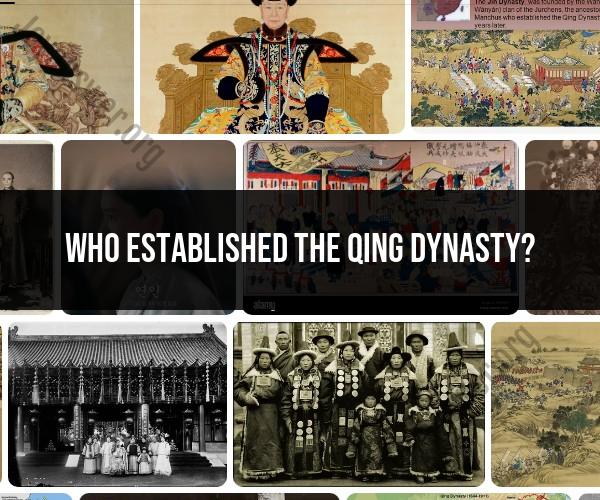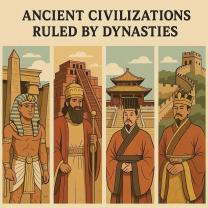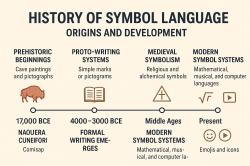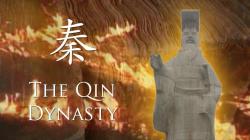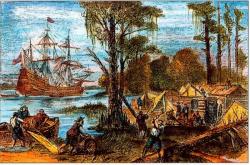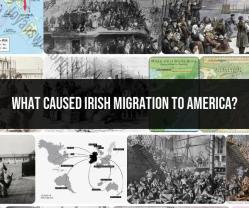Who established the Qing dynasty?
The Qing Dynasty, also known as the Manchu Dynasty, was established by the Manchu people in China. It succeeded the Ming Dynasty and ruled China from 1644 to 1912. The establishment of the Qing Dynasty can be traced back to a series of events and historical developments, including the following:
The Manchu Conquest: The Qing Dynasty was founded by the Aisin Gioro clan of the Manchu people, who are of Tungusic ethnic origin. The Manchu had established their own state, later known as the Later Jin, in the northeastern region of China, in the early 17th century.
Li Zicheng and the Fall of the Ming Dynasty: In the late 16th and early 17th centuries, China experienced a period of instability and rebellion. The Ming Dynasty, which had ruled China for nearly three centuries, was weakened by corruption, economic difficulties, and social unrest. In 1644, a rebel leader named Li Zicheng captured Beijing, the capital of the Ming Dynasty, and this marked the fall of the Ming Dynasty.
The Qing Invasion: Recognizing the opportunity presented by the fall of the Ming Dynasty, the Manchu leader Nurhaci and his successor, Hong Taiji, initiated a series of military campaigns to take control of northern China. They captured Beijing in 1644 and declared the establishment of the Qing Dynasty.
The Consolidation of Qing Rule: After taking Beijing, the Qing rulers continued their military campaigns and gradually extended their control over the entire Chinese territory. They faced resistance from Ming loyalists and other regional warlords, but over several decades, the Qing Dynasty was able to consolidate its rule and establish a unified empire.
Cultural and Administrative Adaptation: The Qing rulers adopted certain aspects of Chinese culture and governance, such as the Confucian system of administration, to help govern the vast Chinese population. They promoted a policy of multiculturalism and religious tolerance, allowing various ethnic and religious groups to coexist within the empire.
Qing Expansion and Decline: The Qing Dynasty reached its height during the reign of Emperor Kangxi (1661-1722), but it also faced challenges, including internal strife, external pressures from Western powers, and economic difficulties. By the 19th century, the Qing Dynasty was weakened, and a series of conflicts, including the Opium Wars, further undermined its authority.
The Qing Dynasty eventually fell in 1912, marking the end of thousands of years of imperial rule in China. The Xinhai Revolution, led by revolutionary figures like Sun Yat-sen, resulted in the abdication of the last Qing emperor, Puyi, and the establishment of the Republic of China. The fall of the Qing Dynasty led to a period of political and social transformation in China's history.
The Founding of the Qing Dynasty: Key Figures and Events
The Qing dynasty was founded by the Manchus, a Tungusic-speaking people from Manchuria (northeast China). The key figures in the founding of the Qing dynasty were:
- Nurhaci (1559-1626): Nurhaci was the founder of the Jurchen Jin dynasty, which was the precursor to the Qing dynasty. He united the Jurchen tribes and began to expand his territory into China.
- Hong Taiji (1592-1643): Hong Taiji was Nurhaci's son and successor. He renamed the Jurchen Jin dynasty to the Qing dynasty and began to adopt Chinese culture and institutions.
- Dorgon (1612-1650): Dorgon was Hong Taiji's nephew and brother-in-law. He was a powerful military leader and played a key role in the Qing dynasty's conquest of China.
The key events in the founding of the Qing dynasty were:
- The Battle of Aihun (1644): The Qing dynasty's victory at the Battle of Aihun over the Ming dynasty allowed the Qing forces to enter China.
- The Fall of Beijing (1644): The Qing dynasty conquered Beijing, the capital of the Ming dynasty, in 1644. This marked the official end of the Ming dynasty and the beginning of the Qing dynasty.
The Ming-Qing Transition and the Rise of the Qing Dynasty
The Ming-Qing transition was a period of great turmoil and change in China. The Ming dynasty had been weakened by internal corruption and rebellions. The Qing dynasty took advantage of this weakness to conquer China.
The Qing dynasty's rise to power was also aided by its military superiority. The Qing army was well-organized and disciplined. It was also equipped with advanced weapons, such as cannons and muskets.
Historical Context and Political Landscape of the Time
The Ming-Qing transition took place during a time of great change in China. The Ming dynasty had been in power for over 200 years, but it had become increasingly corrupt and inefficient. The Qing dynasty was a new and rising power. It was led by a young and ambitious ruler, Hong Taiji.
The political landscape of China was also changing during this time. The Ming dynasty had been a centralized government, but its power had begun to weaken. The Qing dynasty was a more decentralized government. It gave more power to regional leaders.
Challenges Faced by the Qing Dynasty's Founders
The Qing dynasty's founders faced a number of challenges. One challenge was the need to consolidate their power over China. The Ming dynasty had a large and powerful army, and there were still many Ming loyalists who opposed the Qing dynasty.
Another challenge was the need to adapt to Chinese culture. The Manchus were a different ethnicity from the Han Chinese, and they spoke a different language. The Qing dynasty's founders needed to win the support of the Han Chinese people in order to rule China effectively.
The Qing Dynasty's Early Rule and Consolidation of Power
The Qing dynasty's founders adopted a number of measures to consolidate their power over China. They kept the Ming dynasty's bureaucracy in place and adopted many of the Ming dynasty's institutions. They also learned to speak Chinese and adopted Chinese culture.
The Qing dynasty's founders also expanded the empire's territory. They conquered Mongolia, Tibet, and Xinjiang. This made the Qing dynasty the largest empire in Chinese history.
The Qing dynasty's early rule was marked by stability and prosperity. The economy grew, and the population increased. The Qing dynasty also built a number of public works projects, such as roads and canals.
The Qing dynasty's early rule was also marked by a number of challenges. The Qing dynasty faced opposition from Ming loyalists and other rebel groups. The Qing dynasty also faced threats from foreign powers, such as Russia and the British Empire.
Despite these challenges, the Qing dynasty managed to consolidate its power over China and establish itself as a major power in Asia.
